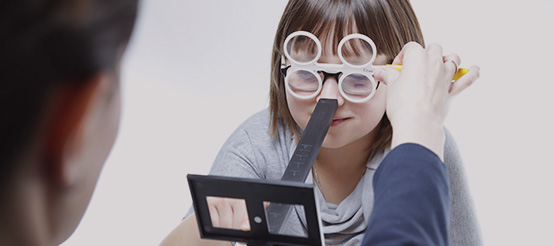The incredible convenience and usefulness of modern technology means that many of us pass hours (sometimes days!) at a time looking at a digital screen. However, there can be a downside, and that is a rising number of us suffering from digital eyestrain.
Today, the majority of people have been found to spend two or more hours looking at a digital screen every day. Since our eyes require more energy to focus on a screen than, say, a person’s face, they get pretty tired.
Digital eyestrain doesn’t usually present severe symptoms or have a lasting influence on your sight, but it can be irritating and even affect your work.
Digital Eyestrain Explained
The ciliary muscle in the eye is what allows the lens of your eye to change shape and therefore focus at different depths. When looking at a smartphone, tablet or laptop screen, those focusing muscles are under constant tension. And what’s a synonym for tension? Strain!
This strain on your eyes can lead to a number of uncomfortable symptoms:
- Tired eyes.
- An itchy, possibly burning sensation in the eye.
- Stiff or painful neck and back muscles.
- Blurred vision.
- Focusing difficulty.
- Headaches.
Now think why digital eyestrain might be on everyone’s mind… Do you know anyone who doesn’t use a computer or tablet for work? Many modern professions involve looking at a monitor for up to 6, 8 or 10 hours per day. It’s no surprise, then, that the number of eyestrain patients is increasing, and with those increased numbers comes a decrease in productivity at work. We need a solution.
How to Manage Digital Eyestrain
There’s not a ‘cure’ per se, because eye strain isn’t a disease or infection. Fortunately, there are many environmental and behavioural factors which you can implement to reduce or totally alleviate your symptoms.
- The Resting Point of Accommodation (RPA). By keeping your monitor around 31 inches from your eyes, you reduce the effort required to focus. This distance is referred to as the RPA.
- Proper lighting. Try to have ambient light on both sides of you screen. Any monitor against a dark backdrop requires more work from your eyes; good lighting makes everything easier, and helps your eyes relax.
- Avoid glare. If you can, angle your screens so there’s minimal light reflection.
- Blue light filtering eyewear. A lot of devices output ‘blue light’ (light of a specific wavelength approaching UV) which is known to be damaging to our retinas. Special eyewear is being released which maintains a good colour balance, but absorbs a good deal of blue light.
- Take breaks. Try taking a break every 20-30 minutes and let your eyes focus on something away from a screen. Talk to a colleague, watch the world go by or even close your eyes. They’ll thank you for it!
Digital eyestrain can make looking at a screen quite uncomfortable. That leads to lower productivity at work and could affect your home life too. Once you have confirmed that it is digital eyestrain that’s affecting you (from the comprehensive eye exam you always attend, every 12 months..) then follow the steps above, as appropriate, to alleviate symptoms.















